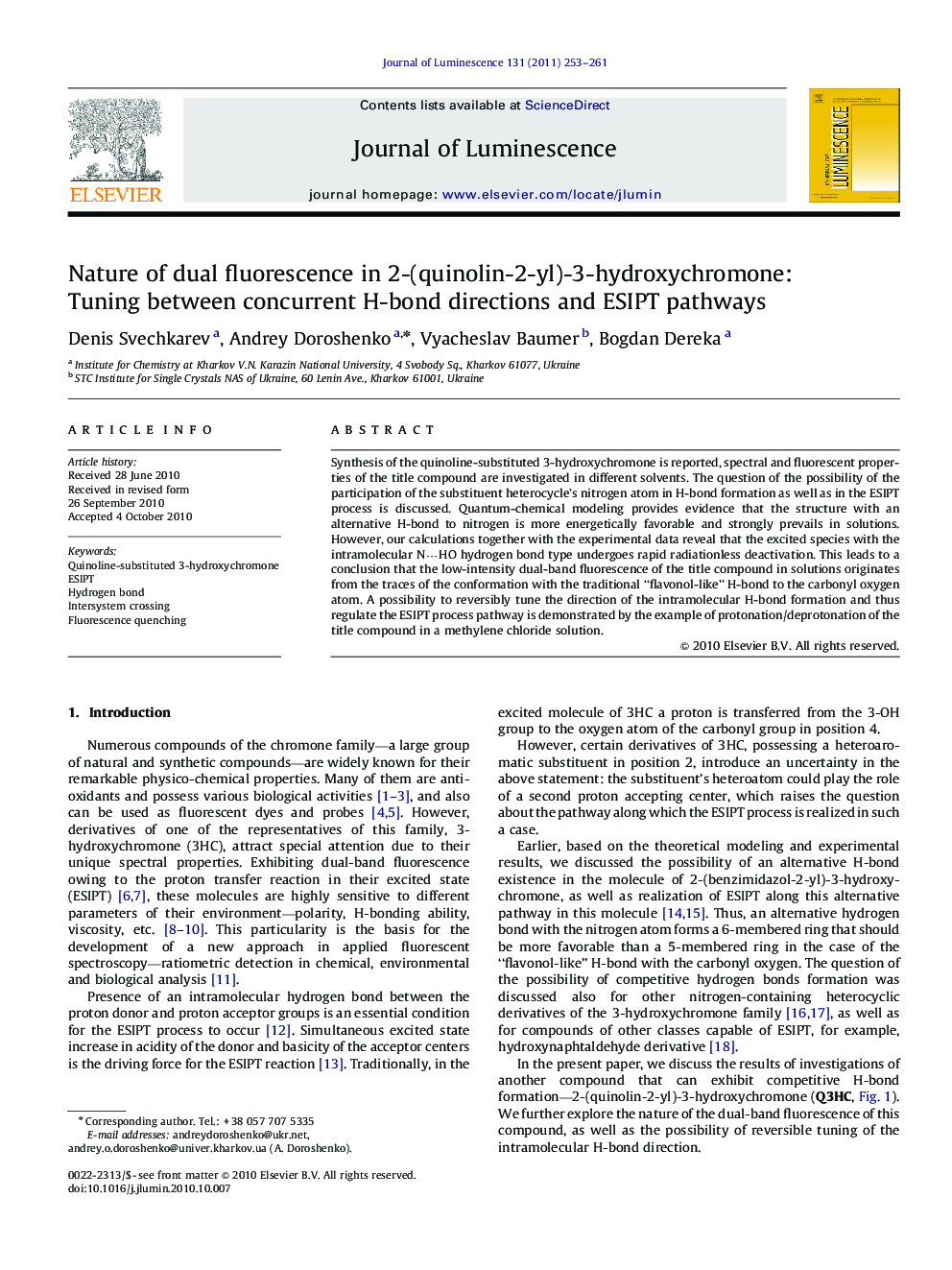| Article ID | Journal | Published Year | Pages | File Type |
|---|---|---|---|---|
| 5402188 | Journal of Luminescence | 2011 | 9 Pages |
Abstract
Synthesis of the quinoline-substituted 3-hydroxychromone is reported, spectral and fluorescent properties of the title compound are investigated in different solvents. The question of the possibility of the participation of the substituent heterocycle's nitrogen atom in H-bond formation as well as in the ESIPT process is discussed. Quantum-chemical modeling provides evidence that the structure with an alternative H-bond to nitrogen is more energetically favorable and strongly prevails in solutions. However, our calculations together with the experimental data reveal that the excited species with the intramolecular Nâ¦HO hydrogen bond type undergoes rapid radiationless deactivation. This leads to a conclusion that the low-intensity dual-band fluorescence of the title compound in solutions originates from the traces of the conformation with the traditional “flavonol-like” H-bond to the carbonyl oxygen atom. A possibility to reversibly tune the direction of the intramolecular H-bond formation and thus regulate the ESIPT process pathway is demonstrated by the example of protonation/deprotonation of the title compound in a methylene chloride solution.
Related Topics
Physical Sciences and Engineering
Chemistry
Physical and Theoretical Chemistry
Authors
Denis Svechkarev, Andrey Doroshenko, Vyacheslav Baumer, Bogdan Dereka,
